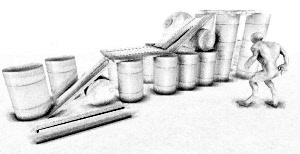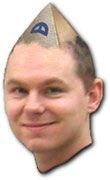
Editorial - January 2009

Looking back at 2008, I can pick one particular coding skill that changed the way I do things, and opened up a whole new world of possibilities. Once again, it was something I discovered at The Game Creators Convention, this time from Ian, forum regular, moderator and author of the Matrix1 utilities.
Stacks are my must-have technique going forwards into 2009. I knew about them already, but always thought the trade off between coding and performance was not worthwhile. I was very wrong. Put simply stacks allow you to track a collection of entities very efficiently. Let's take the example of 10,000 potential objects (I say potential, as you may have anything between 0 and 10,000). For the stack system, you need two additional arrays of the same size, that will simply hold integer values - the indexes of the objects in the original array. When you need a new object you take it from the "objects still available" stack and put it on the "objects in use" stack. Likewise, when you have finished with your object, you put it back on the "objects still available" stack, remembering to shuffle the remaining objects in use down to fill the gap. Now, when you need to act on your objects, you don't need to check all 10,000 entities. Simply check the "objects in use" stack and go directly to the array elements that you need to be concerned with.
This is a very quick explanation of a stack system, and doesn't do it any justice. If you haven't used them before, I would recommend sitting down with the above example, and playing with the figures to see how much processing time you might save as the number of entities fall and rise. I have found it particularly useful with an effects system I have in development, where several hundred exchanges can be made in just a few seconds of processing.
In 2009, I hope to find many more useful techniques, and even revisit those that I have dismissed in the past as I did with stacks. Of course the forums will be my first port of call, they have served me well for the last 5 years and will do so for the future.
In this first issue of the new year, we have reviews of DarkBASIC Professional, Social Arcade, FPSC and FPSC X10 in terms of the progress thay have made over the last 12 months, and where they are headed in the near future. We see the introduction of Genetica to the range of products available from the TGC site, enabling seamless and animated textures at a highly professional and advanced level. There is also the usual features, including a host of videos and Lee's tip of the month covering LOD techniques. Please, enjoy this first issue of 2009, and let us all look forwards together to a productive 12 months.
Until next time,

contents
(1) DarkBASIC Pro (2) Genetica (3) FPSC News (4) Social Arcade (5) TGC Store (6) FPSC Compo (7) DarkGDK & GDK.net (8) Leadwerks (9) Odyssey in 2009 (10) Tip Of The Month (11) Videos (12) PlayBasic (13) Winner (14) Outro
DarkBASIC Professional News

Dark Basic Professional U71
Work had started on the new U71 version soon after the TGC convention 2008, and has not stopped or even slowed down as this increasingly large update seeks to improve features and help pages within the language. Thanks to a steady stream of suggestions and refinements from the forum public beta testers, we have been able to complete what is a great update to the Dark Basic Professional language. 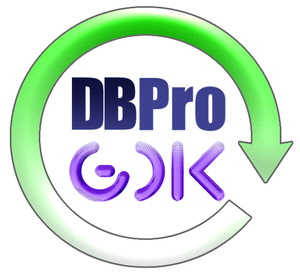 You can download it direct from the Dark Basic Professional main web site.
You can download it direct from the Dark Basic Professional main web site.
The big deal about this update is the internal merging of the DarkGDK source code, so from U71 onwards the DBP and GDK source codes are one and the same again. These code paths split over a year ago as the GDK underwent some changes that would have interfered with the smooth running of DBP and its own update cycle. Now that project is complete, we have brought the code back into a single source code base and ensured the best of both worlds made it into each product.
Although we create a rod for our back each time we substantially add to the language, we just could not resist adding a new post process screen command which allows the entire screen to be redirected to a render texture and that image rendered via an internal screen aligned quad through a shader effect to the final backbuffer which is the screen you see. The upshot is that you now have some new commands called TEXTURE SCREEN, SET SCREEN EFFECT, DRAW TO CAMERA and DRAW TO SCREEN which combine to allow you to apply a shader to the screen. This means you can do things like BLOOM, GREYSCALE, HEAT-VISION and other post process effects on your final screen in very few lines. We have also made it fully compatible with the DarkSHADER system so you can load DBS files from DarkSHADER and have them affect the screen in five lines of code.
For those who want to own every plug-in, you will notice a new module in the latest certificate viewer which shows we are about to provide official support for GreenEAR. We will announce this in more detail with examples and demos next year. All we can reveal now is that this module is totally awesome and if you ever wanted to make a game that runs on a server, but did not want the hassle of writing a game that runs on a server, this is a must have module!
In amongst the usual flood of tweaks, bug fixes and help system improvements, you will find a cool new parameter in the LOAD SOUND command which allows you to set the sound so when it plays or loops, it does so globally. That means even if your application is hidden or does not have focus, it will still play your sounds. Ideal if you are making a sound application.
You can upgrade to U71 now, by downloading the latest update.
Dark Physics Demos
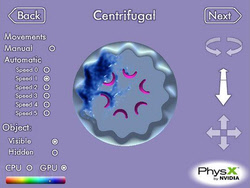 Custom PC currently features an article on NVIDIA PhysX, and how it is gaining momentum in the gaming world.
Custom PC currently features an article on NVIDIA PhysX, and how it is gaining momentum in the gaming world.
Worth noting is the mention of the demos written in DarkBASIC Professional by our dedicated forum members, and specifically highlighting Kenneth Bugeja's work on fluids and soft bodies.
Genetica - Seamless and Animated Textures

Node Based Workflow. All graphical elements can be visually rearranged, with no change being permanent. Results are resolution independent and automatically seamless.
- Professional Drawing Tools. Create awesome designs with a new suite of drawing tools. Genetica will take care of making your drawings seamless.
Visual Styles. Achieve realism in seconds by applying sophisticated styles to your designs.
- Powerful Lab System. Genetica combines the flexibility of its node-based system with a set of powerful Lab Nodes that automate tricky graphics tasks.
- Advanced Lighting. Genetica simulates environmental reflections, global illumination, shadows, ambient occlusion, and more, in order to give you the most realistic surfaces possible.
- Thousands of Presets. The number of preset textures, styles, and environment maps is now in the thousands. These royalty-free resources can be edited or used as-is in your projects.
- Effect Maps. Genetica will generate effect maps that can be used in any of the channels supported by your 3D environment, such as bump, specular, reflection, luminance, and others.
The Professional edition extends these features further:
- Edit HDRI Environments. Create custom HDRI environment maps for use both within Genetica and your external 3D environment. Render and export HDRI environment maps in common formats like latitude/longitude, mirrored ball, and cubic.
Normal Maps. Enjoy fully-integrated normal map generation. Like any of the other effect maps created in Genetica, normal maps are automatically seamless and can be re-rendered at any desired resolution.
- Hair and Fiber. The Hair node and Fiber Lab allow graphics professionals to quickly create a wide range of
fully-seamless fibrous materials from animal fur to fuzzy cloth.
- Batch Processor. The batch processor will allow you to automate a variety of repetitive tasks, such as applying the same effect to a number of textures, or automatically rendering large numbers of textures.
- Lab Conversion. Convert Lab Nodes into node trees, giving you unmatched control over your textures.
HDRI and 32 bit Output. Export images from Genetica in formats supporting high dynamic ranges and ultra-high color precision.
![]() Full details of Genetica 3.0 and ordering details are available now on the product web page.
Full details of Genetica 3.0 and ordering details are available now on the product web page.
News from the World of FPS Creator

FPS Creator X9 and X10 Progress
A few weeks ago TGC received news of an FPS Creator game that was going to be published, and the publisher wanted to see a few tweaks. The author also wanted FPS Creator to compile his 13-level epic quickly and flawlessly, and so we decided to create a new update to provide just that.
Just launched, V1.14 is the version that introduces these new refinements and includes a significant speed-up of the build game process in the situation where lots of FPI scripts are located in the scriptbank.
We have also increased the supported bone count from 32 to 60 for all FPS Creator animated models that use shaders.
The built-in game creator store has an update to solve a crash bug when Vista attempts to upload certain types of segment.
There have been many calls for weapons to auto-equip when you start a new level or load a saved game, and this has now been implemented along with two new FPI conditions which allow you to check what level you are on. For example if you wanted to change the skybox for level three because it is a cave or underground level, you can now add a line to setuplevel.fpi to read:
:state=0,levelequal=3:sky=skybank\ww2\Gas
and a second line to read:
:state=0,levelnotequal=3:sky=skybank\ww2\Hil
 This will use the Gas sky on level three and the Hil sky on the other levels.
This will use the Gas sky on level three and the Hil sky on the other levels.
As a final Christmas treat, we also decided to drop in hard coded support for the PC version of the XBOX 360 controller. The controls are fixed for this first version but we plan to allow all buttons to be configurable in a future version as we know when it comes to controllers one size does not fit all.
FPS Creator X10
You may recall that last month we did not cover any X10 news, which may explain the thread that popped up making vocal some of your concerns over the future of X10 development and specifically when the next update will be released. The reason most of our energies have been on DBP and X9 is that we spent around 15 months developing the X10 product, and we wanted to give something back to the DBP and X9 communities for being so patient with us during that project. I think we have done a great job with DBP and the spin-off product, Dark Game Studio, and X9 now has a host of new toys and a lot of stability and performance tweaks under the hood.
We think community lead development is a great way to create products and updates, and if the X10 guys want an update then that is what they are going to get!
Starting January 2009 we will fire up the X10 development machine. We will start the process of what one forum user understands as 'givin X10 some lovin' and begin work on an update that addresses some of the issues you have been experiencing. Top of the list is the compatibility issues with ATI cards, and to that end we have purchased a DirectX 10 card that actually runs on a PCI slot if you can believe it! We also want to get the store and X9 models into X10 as gracefully and quickly as possible along the way. We have some other ideas too, but wait for the beta for news on those. Our hope is that X9 and DBP guys won't mind a little side-tour to X10 land for a few months, and anything new that goes into X10 will eventually make it back into the migration version and the next revision of DBP.
Facebook's Social Arcade
Rick Vanner and Dave Milton visited Facebook headquarters in December, for the results of the fbFund competition. Having been awarded $25,000 USD in the previous round, it is unfortunate to report that Social Arcade didn't scoop the ultimate prize of $250,000 USD. The Game Creators appreciate the support given by the community, and the time and effort put in to continuously voting throughout November. "We were disappointed not to win but we gave it our best shot" says Rick Vanner, Financial Director of TGC. "Social Arcade will continue to be developed in 2009 after a short break."
The Game Creator Store - New Additions

Did you know that The Game Creator Store includes not just FPSC Entities and segments, but also music, sky boxes, applicatons, models and photos? ![]() Each month the Game Creator Store grows as our approved artists upload their latest offerings. Start up your store (through FPS Creator or the standalone version) to see these and many more.
Each month the Game Creator Store grows as our approved artists upload their latest offerings. Start up your store (through FPS Creator or the standalone version) to see these and many more.
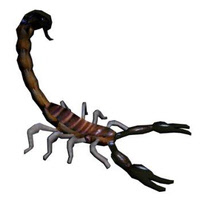 Scorpion
Scorpion
A small but very venomous scorpion that will attack the player if they get too close. Any player of modern FPS games will know that small, agile creatures are a problem in most games these days!
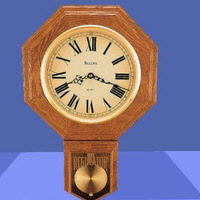 Wall Clock
Wall Clock
Break up empty wall spaces with a wall clock. It is often easy to miss details - or lack thereof - such as expanses of wall, that can be easily transformed with a small number of well-placed objects.
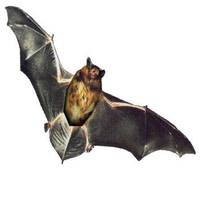 Bat
Bat
This nocturnal menace can enrich your scenes with unexpected surprises.
The bat is a character, and can be killed like any other, with a well-aimed shot.
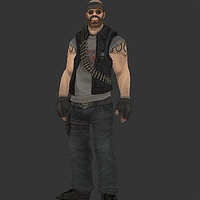 Civ Gunner
Civ Gunner
A 'Civilian Soldier' themed character, good for urban style shooters or as mercenaries etc. This is the fourth of a character set.
Best or suggested weapon designation includes heavy weapon, assault rifle, and rocket launcher
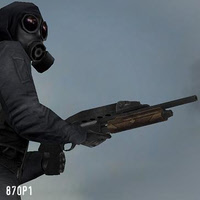 870P1 Riot Gun
870P1 Riot Gun
Typical riot shotgun of the 1980s-1990s with top folding metal stock. Includes VWEAP and pickup weapon and ammo entities.
Uses model pack 9-10 compatible hands. Enhancements are also included for FPSC modifications, available from the respective authors.
All of the above models are available to purchase and download through the inbuilt Game Creator Store in FPS Creator, and also using the standalone store for other game-making tools.
The BIG FPSC Christmas Competition

The deadline for entries into the Big FPSC Christmas Puzzle competition is now gone. The judges will be busily "working" through the many games, assessing just how well they have met the remit of a 5-room puzzle game. They will shortly decide on the ultimate winner, and of course the runners-up who will also be taking their share of the spoils from the prize pot. Here is a reminder of everything that is on offer to the winners:
- Printed & bound copy of the Community Guide by Nickydude.
- Atmospheric Sounds Pack By Nickydude.
- Unreleased sound pack of Voices (including Child, Demon & Robot) by Nickydude
- Chainsaw Brute by Bond.
- Over 4000 Store Points by TGC (yes, that's over four thousand!)
- An exclusive texture pack by Henry Ham.
- Sci Fi segment pack by Henry Ham.
- Model Pack 8 [Dark Egypt] + Bonus by Rosstradamus
- Model Pack 17 by Bond
- Model pack 18 by Bond
- A $20 store voucher courtesy of Black Draco Games
- Rolfy's Weather System
- Any 3 of Errant A.I's store models
- A pre-paid 60 day time card for City of Heroes [Requires City of Heroes to play].
- Inspire! Model Pack 1
![]() These prizes will be distributed amongst the winners. You can view the competition thread for the latest discussions.
These prizes will be distributed amongst the winners. You can view the competition thread for the latest discussions.
DarkGDK Update

The long awaited update to DarkGDK has been released, available from the DarkGDK website, which includes support for some of the commands that DBPro users have been enjoying plus a few things DBPro users wish they had, including the ability to launch C++ commands right at the very start of the application execution (even before initialisation of the DarkGDK system) and the ability to run commands at the very end of the application too. There is also a new command which allows the default window to be changed first time around, rather than creating one DarkGDK window then resizing it.
This update is also crucial to running the source code examples that are part of the six part Webcast hosted by Microsoft on DarkGDK. The update is also vital for a new, as yet unannounced program which we will be giving away in January. Check out the next newsletter for more details.
![]() DarkGDK is available from the dedicated pages on the website.
DarkGDK is available from the dedicated pages on the website.
Lee's webcasts on MSDN
The full series of webcasts by Lee Bamber on 3D game development using DarkGDK is now available to watch on demand. You can watch these individually as your schedule allows, also allowing you to digest and put into practise each part before moving on.
- Session 1 : Introducing DarkGDK
In this first webcast, we explain what DarkGDK is and describe how it can make programming games much easier than it would be normally. The actual game will be available for you to download with all resource files. This is the game we dissect over the coming sessions in this webcast series. - Session 2 : A Simple Game Framework
In this webcast, we examine the fundamental structure and flow of the game we are pulling apart in this six-part series. We explore items like the overall flow of the game, the separate sections of the game structure and the logic that holds it all together. This is essentially a description of the game chassis. - Session 3 : Game Levels and The Player
Here we cover the actual game levels and explain how the level loop differs from the game loop. We also describe controlling the player object, player weapon, bullets, and collisions with the game bounds. At the end of this webcast, we have things happening on the screen with interactions. - Session 4 : The Enemies
Session four covers the enemies in the game, explain the way they are set up and handled, and describe how they are controlled by the simplest of game artificial intelligence (AI). We explore how inter-enemy collisions and responses work and show how the player bullets interact with the enemies. At the end of this webcast, we will have the makings of our game as the player faces the enemy for the first time. - Session 5 : Explosions, Effects and Information Displays
We cover the explosion effects in the game and examine how sounds are triggered by the various game elements. We also explore how to display information on-screen for things like scoring and explain how to control them with simple function calls. - Session 6 : Finalizing Levels, Testing and Polish
Join us for this final installment of our six-part webcast series to learn how to set the difficulty curve of the game and make levels. We also discuss testing the game, making final adjustments to the game, and getting it ready for release. We explore how to take the game further with simple expansion possibilities. We finish with the idea that you are now better equipped to tackle a similar game yourself in C++ and DarkGDK.
The ease of DarkBASIC Professional with the power of Visual Basic.NET and C#.NET
As reported last month, DarkGDK.NET is now available, and all those who pre-ordered will now have their licensed versions of this version of our 3D programming language suite. The new version contains many improvements, including:
- No requirement to authenticate your applications. This will be a familiar ring to developers using previous versions of the toolkit.
- Lots of examples and tutorials to get you started straight away using your favourite .NET language.
- Both CSharp.NET and Visual Basic.NET use a project template allowing you to start developing your program without the need for object library referencing and setting up.
- Place a ctlDarkGDKViewport control straight onto your Winforms application and setup the properties to configure your application without any required programming.
- The toolkit now unifies all of the original functionality of previous versions into a neat and powerful set of .NET classes allowing you to program using modern OOP principles.
- No need for remembering Object, Image and Bitmap ID numbers.
- Standard Merge Module for your application deployment requirements allowing you to build Setup Projects for your applications without any need to know where components have to be installed.
- Detailed help documentation on all of the supported classes and tutorials, making your adventure into the new toolkit, easy and productive.
The DarkGDK.NET toolkit supports the following compilers -
- Microsoft Visual Studio .NET 2005 & 2008
- Microsoft Visual Basic.NET Express Editions
- Microsoft Visual C#.NET Express Editions
- Microsoft .NET framework 2.0 and above
Now you can take full advantage of the game engine that powers DarkBASIC Professional from within any of the Visual Studio .NET Express or Visual Studio .NET Professional environments, with the DarkGDK.NET. A whole new world of possibilities can be opened up by combining the features that both Visual Basic.NET and C# offers, and the power of the DarkGDK.NET. The GDK brings the flexibility of the DarkBASIC Professional engine to the world of .NET development while still retaining the ease of use that DarkBASIC Professional offers.
Developing games with the DarkGDK.net offers many benefits:
- Royalty Free License available
- Near native execution speeds comparable with C++.
- Amazingly small executables. EXE file sizes start from 3 to 5k, a typical starting size for .NET based executables.
- Significantly faster compile times and easier debugging (dependant on compiler used)
- Use virtually all of the commands and functions found in DarkBASIC Professional
- Combine all of this with the features that .NET development offers such as the chance to use object oriented code, an industry standard syntax, well developed compilers and IDEs.
- All game commands are covered: joystick handling, keyboard input, music, sound and animation as well as the 3D game engine.
- All the benefits of a .NET compiler and language structure / syntax found with Visual Basic.NET and C#. All with the functions and features of DarkBASIC Professional
- A great way to get into .NET development. And take advantage of using .NET GUI components such as WinForms.
![]() Go to the DarkGDK.net pages now to get the full details, and to order for just £20 GBP ($30 USD, €25 EUR). This licensing fee gives you the freedom to sell the games and applications you make.
Go to the DarkGDK.net pages now to get the full details, and to order for just £20 GBP ($30 USD, €25 EUR). This licensing fee gives you the freedom to sell the games and applications you make.
![]() In addition, there is also a combined DarkGDK and DarkGDK.net license bundle available for £35 GBP ($50 USD, €40 EUR). Again, this great deal provides the royalty-free licenses required to sell your games.
In addition, there is also a combined DarkGDK and DarkGDK.net license bundle available for £35 GBP ($50 USD, €40 EUR). Again, this great deal provides the royalty-free licenses required to sell your games.
Leadwerks Engine Update

Leadwerks Engine 2.2 will be released in January. The update will be available to all TGC Leadwerks Engine customers. Version 2.2 will feature the following:
- Improved post-processing effects.
- 3D ocean waves with buoyancy physics.
- Vehicle physics.
- Greater compatibility with ATI hardware.
- Improved speed.
Learning Library
You can now find more than 5 hours of tutorials, oriented towards anyone using the engine with C and C++. ![]() Click here to view them now. The topics covered include deferred lighting, camera controls and mesh creation. You will also discover how to implement physics bodies, create convincing materials and introduce particles into the pool of effects at your disposal.
Click here to view them now. The topics covered include deferred lighting, camera controls and mesh creation. You will also discover how to implement physics bodies, create convincing materials and introduce particles into the pool of effects at your disposal.
Odyssey-Creators update for 2009

by Frédéric Cordier
2009 will see the introduction of some new applications from Odyssey-Creators, as well as updates to our existing range. Firstly though, we would like to announce that our established and well-loved software 3DMapEditor will become free for everyone. Look out for this soon.
2009 will see the arrival of a new DarkBASIC Professional plugin dedicated to 2D/3D game development with a set of commands never seen in DarkBASIC Professional before, we hope to release it in the middle of 2009. We also anticipate the release of a full 2DMapEditor in mid-2009, which will be compatible with DarkBASIC, DarkBASIC Professional, and PureBASIC amongst others. This editor will allow you to create multi-layer 2D Maps with precalculated light effects. It will provide source code to load and display these maps in the different programming languages.
The third product Odyssey-Creators are working on is PurePLUGIN Pro. This product should be released early in 2009. It's an improved version of PurePLUGIN (which will become PurePLUGIN Basic) that will allow you to create third party DLLs for DarkBASIC Professional without the need for the PurePLUGIN.DLL file.
Concerning our other products, we'll be releasing upgrades for eXtends, X-Quad Editor and 2DPluginKIT to improve these products as soon as possible. I hope this news is enough to keep you all interested and I wish you all a happy and prosperous new year 2009!
Lee's Tip of the Month - Fading Fast
We are going to take a quick look at a technique called 'Level Of Detail', or as we say in 3D circles, LOD. LOD is the method by which we reduce the amount of detail sent to the graphics card as an object moves into the distance so we can get more speed in our game. You get more speed because the fewer polygons you need to render the quicker you can finish rendering the scene, and the more scenes you can draw in a second, which means faster, smoother gameplay.
Implementing LOD is relatively simple. You create three or four models, each one using fewer polygons than the last so you might have 4000, 2000, 1000 and 500 being the least detail which will be used when the model is drawn in the distance. In fact, the code is so simple I can show it here:
LOAD OBJECT "highest.dbo",1
LOAD OBJECT "high.dbo",2
LOAD OBJECT "med.dbo",3
LOAD OBJECT "low.dbo",4
DO
CONTROL CAMERA USING ARROWKEYS 0,1,2
dx#=OBJECT POSIITON X(1)-CAMERA POSITION X()
dz#=OBJECT POSIITON Z(1)-CAMERA POSITION Z()
DISTANCE#=SQRT(ABS(dx#*dx#)+ABS(dz#*dz#))
FOR N=1 to 4 : HIDE OBJECT n : NEXT n
IF DISTANCE#<500
SHOW OBJECT 1
ELSE
IF DISTANCE#<1000
SHOW OBJECT 2
ELSE
IF DISTANCE#<1500
SHOW OBJECT 3
ELSE
SHOW OBJECT 4
ENDIF
ENDIF
ENDIF
LOOP
Replace the filenames with some model files you can load, and you will be able to see the model change to the appropriate version of the model based on your distance.
So ten minutes later you have added LOD to your game (at least for one model), and a whole pile of new art for your artist to create (which I am sure he will thank you for). There are even quicker ways to create this LOD trick, but the above serves as a good example for explanation purposes.
The above however is not the object of my tip this month. I want to go a stage further and introduce the concept of alpha blend fading. You see the problem with the above trick is the traditional 'popping' visual you get as the object suddenly looses half its polygons right in front of your eyes. You can hide the effect behind nearer objects, but sooner or later your game players are going to notice this constant popping as you move nearer and further from these objects. The solution is to smooth the transition from one object to the other using a technique called alpha blending, which we will look at now.
In itself, the code for this is also straight forward. The following smoothly blends one object to another over the course of one second:
SYNC ON
SYNC RATE 60
MAKE OBJECT CUBE 1,100
MAKE OBJECT SPHERE 2,100
FOR t=0 TO 100
SET ALPHA MAPPING ON 1,t
SET ALPHA MAPPING ON 1,100-t
SYNC
NEXT t
Now you understand the command needed and the basic idea, you can imagine replacing these two objects with the two levels of LOD you are transitioning between and because the two shapes are mostly similar, the change is quite effective. The final code does get a little more complex as you then have to deal with many levels of LOD transition, and making sure the distance is set to such a value that the transition is subtle and pitched so that the right number of polygons are in the scene when you have many instances of the LOD based object. That said, the hard work pays off and you finish up with a nice fast game that is well populated with what appear to be very detailed models, and smooth transitions as you move around.

One final trick is to make the final level of detail a simple screen aligned quad. This is a two polygon model in the shape of a cross with the image of the object textured onto it and facing the camera at all times. It will give the impression of the object in the extreme distance without having to render any of its polygons, and being so far away you do not notice. You can adapt this further to render a different image based on the angle you view the object in the distance, and a great way to do that is to load all possible images of the object in a single texture and alter the UV data of the screen aligned quad to grab that part of the texture for the image you want.
These techniques are the building blocks of success if you want a 3D game scene crammed with objects while retaining high rendering speed. It is well worth experimenting with them, just to see how complex a scene you can create. You might be surprised just how much you can cram into your scene with a little help from LOD, alpha blending and screen aligned quads!
Video Gallery

Night of the Glowing Balls
This is the winning entry of the Leadwerks Engine competition. It displays both physics and lighting effects in a simple but effective demonstration.
Breakable logs remake .
.
Many of you may recall Master Xilo's breakable logs, written using DarkBASIC Professional and Dark Physics. Now he's remade the demo using Leadwerks engine, with a little more polish thanks to a few lighting effects. Attila, the author says "Supporting older hardware is essential when programming casual games, because the client who buys a casual game is not the same client as the one buying a new PC (or GPU) for each new game. Casual games are also played at lunch time on business PCs with weaker graphic hardware."
Reflective Water in DarkBASIC Classic
This is a simple demo showing how reflection can be achieved without the use of shaders. This can be done using DirectX 7, as shown here.
The demo can be downloaded and run yourself.
PlayBasic News

by Kevin Picone
There's nothing like the holiday season to bring everything to a grinding halt. After the marathon coding sessions of the previous months, December has been a relatively easy programming month, with the focus shifting from the PlayBasicFX nice shiny VM2 implementation back to an update of standard PlayBasic edition. The focus of this update has been to not only address any unearthed bugs but to improve the native image loading facilities, particularly the loader found in the LoadMapGFX.
PlayBasic V1.64g - On its way
For the new update, work has been focused upon building a new image loading library to replace the old embedded one, and of course this library will become the base image-loading service for VM2 and beyond. Currently it's making its debut patched into PB1.64, which runs on the older VM1 runtime. The library currently supports various flavors of raw & compressed BMP / TGA / PNG images types. Unlike the previous library, I decided to write the image decoders myself, so that it not only fits better into the PB framework, but it's quicker also. The new library is stack based, which means we can support different formats just by adding them to the decoder stack. This can even be expanded externally, allowing users (who are so inclined) to patch in their own image loaders directly into the PB frame work.
Speed-wise the new version can load and prepare the Xenon block data in about 175->185 milliseconds. This is about 4->5 times faster than the older method, and without the very picky format issues.
Apart from the faster loading and natively supporting alpha-channels, another benefit of the library is that it can now be used behind commands the like the LoadMapGfx command. This previously could only load certain types of BMP images, and was notoriously picky about the actual format, but this is now a thing of that past. To verify this, I've been testing the loading process with the Xenon 2000 map gfx. Why? Because it's the biggest slab of map graphics that I have. The map blocks are around 4 megabytes of graphics data, therefore making the speed improvement much more noticeable. Speed-wise the new version can load and prepare the Xenon block data in about 175->185 milliseconds. This is about 4->5 times faster than the older method, and without the very picky format issues. Map blocks can now also be stored as TGA or PNG.
Other changes coming to the new PBv1.64 release are a round of updates on the documents package, which are required as the existing version is now a good generation behind. PlayBasic V1.64 uses a completely different rendering engine than PlayBasic V1.63 and below. Consequently, it has many extra flexibilities and speed boosts. My goal for the next refresh of the 1.64 package is to get most of the differences covered in the documents. However, given that I'm writing this before the work is complete, we're hoping to get the new release out sometime before the end of December. So it should be available on our site when you read this.
Over And Out
To all those who've supported PlayBasic & UnderwareDesign.com in 2008 my sincerest thanks, I hope you've had a happy and safe holiday season. One thing is for sure though, we'll be back 2009 cluttering up internet airwaves with more techno babble than you can shake a stick it.. until then... feast !
This month's Winner
Each month we pluck one lucky subscriber from the newsletter mailing list and award them a free copy of DarkBASIC Professional. The email address of this month's winner is: qui**ly@tele2.** We have emailed the lucky winner, congratulations!
Outro
Share your news with over 19,500 active games developers!
If you have something you'd like featured in a future issue then please get in touch and include as much information as possible (including where applicable: screen shots, URLs and zip files).
Issue 72 deadline - January 26th 2009.
 Node Based Workflow. All graphical elements can be visually rearranged, with no change being permanent. Results are resolution independent and automatically seamless.
Node Based Workflow. All graphical elements can be visually rearranged, with no change being permanent. Results are resolution independent and automatically seamless. Visual Styles. Achieve realism in seconds by applying sophisticated styles to your designs.
Visual Styles. Achieve realism in seconds by applying sophisticated styles to your designs. Normal Maps. Enjoy fully-integrated normal map generation. Like any of the other effect maps created in Genetica, normal maps are automatically seamless and can be re-rendered at any desired resolution.
Normal Maps. Enjoy fully-integrated normal map generation. Like any of the other effect maps created in Genetica, normal maps are automatically seamless and can be re-rendered at any desired resolution. fully-seamless fibrous materials from animal fur to fuzzy cloth.
fully-seamless fibrous materials from animal fur to fuzzy cloth.
 Scorpion
Scorpion Wall Clock
Wall Clock Bat
Bat Civ Gunner
Civ Gunner 870P1 Riot Gun
870P1 Riot Gun
